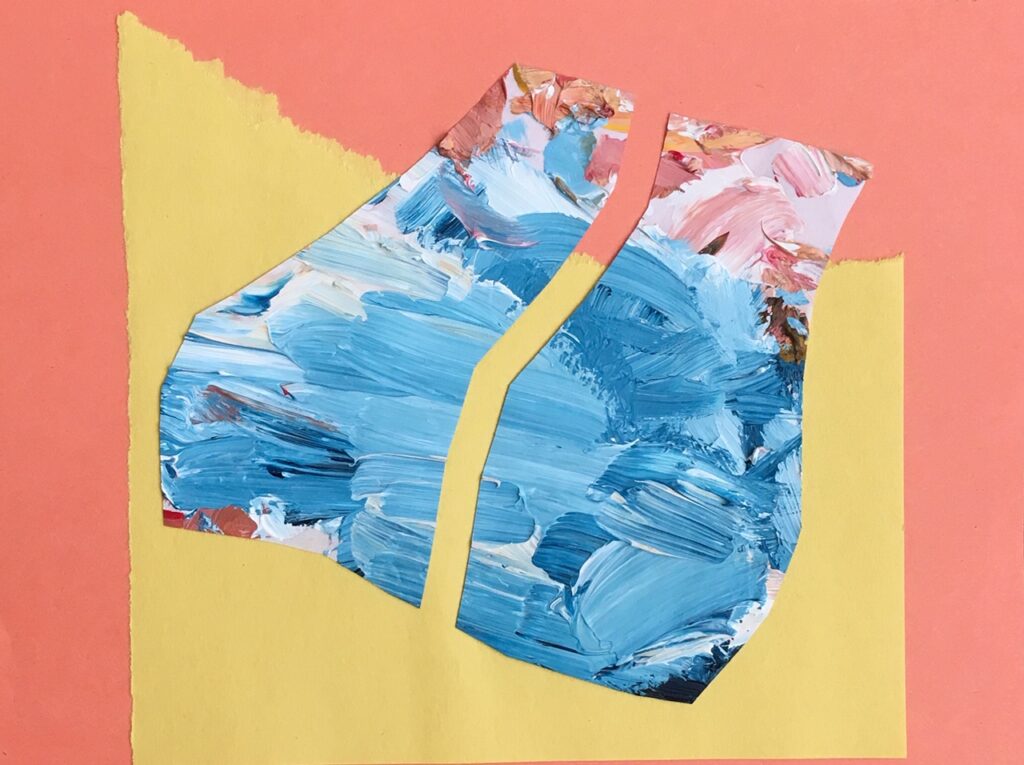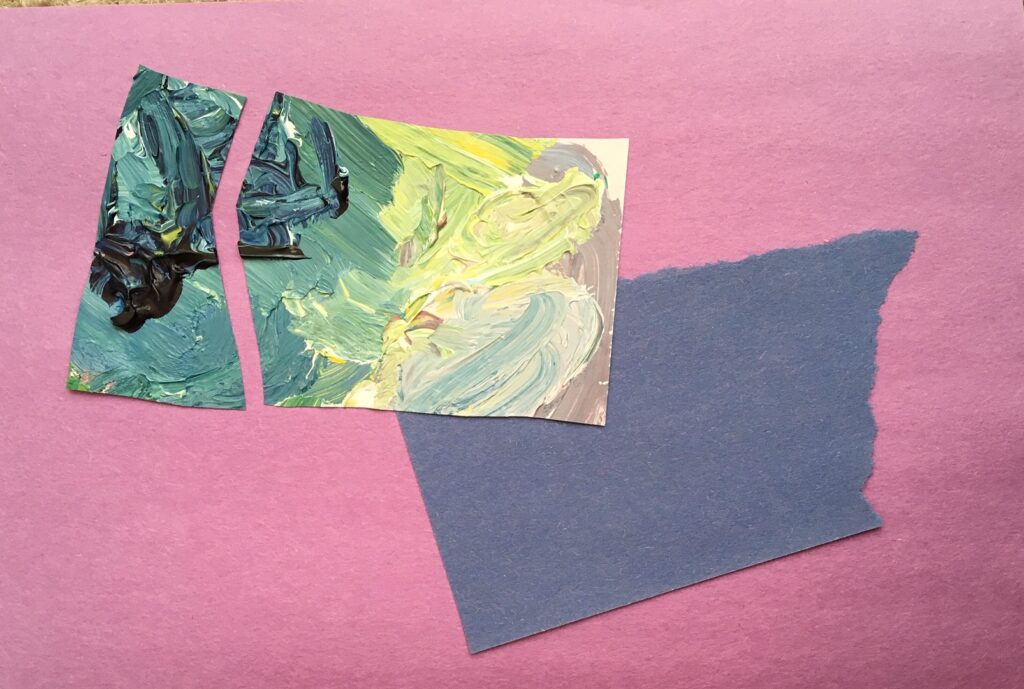The artist reuses disposable acrylic paint palettes and faded school-grade construction paper to recreate river tributaries in the United States and emphasize the uncanny visual effect of algae blooms.
Algae blooms form when marine water systems become discolored as the result of fertilizer runoff. Nitrogen and phosphorous cause excessive growth of microscopic algae, typically coloring the water neon teal, among a wide-range of eerily luminous and highly unnatural colors.

There is no visual account concise and stark, as Edward Burtynsky’s aerial photographs of water. The artist first came upon this collection at the Cleveland Museum of Art during a ten-day art educator residency. Cleveland is located on the Southern shore of one of the largest freshwater lakes in the world, along the banks of the Cuyahoga River, the site of a catastrophic fire in 1969 caused by decades of industrial waste.
The artist was shocked to find that every educator in the program had a story, in one way or another, of how wastewater had affected their communities, making water undrinkable, swimming impossible, with disastrous effects on the health of society’s most vulnerable.
In creating works that feature the blindingly saturated colors of algae blooms, combining the natural with synthetic, the artist highlights the interaction between water and humans in Anthropocene.
The florescent hues that color a body of water as a result of algae bloom is uncanny. It is an unsettling image that is uncomfortable among the mind’s schema of what a “river” or “lake” is supposed to be.











